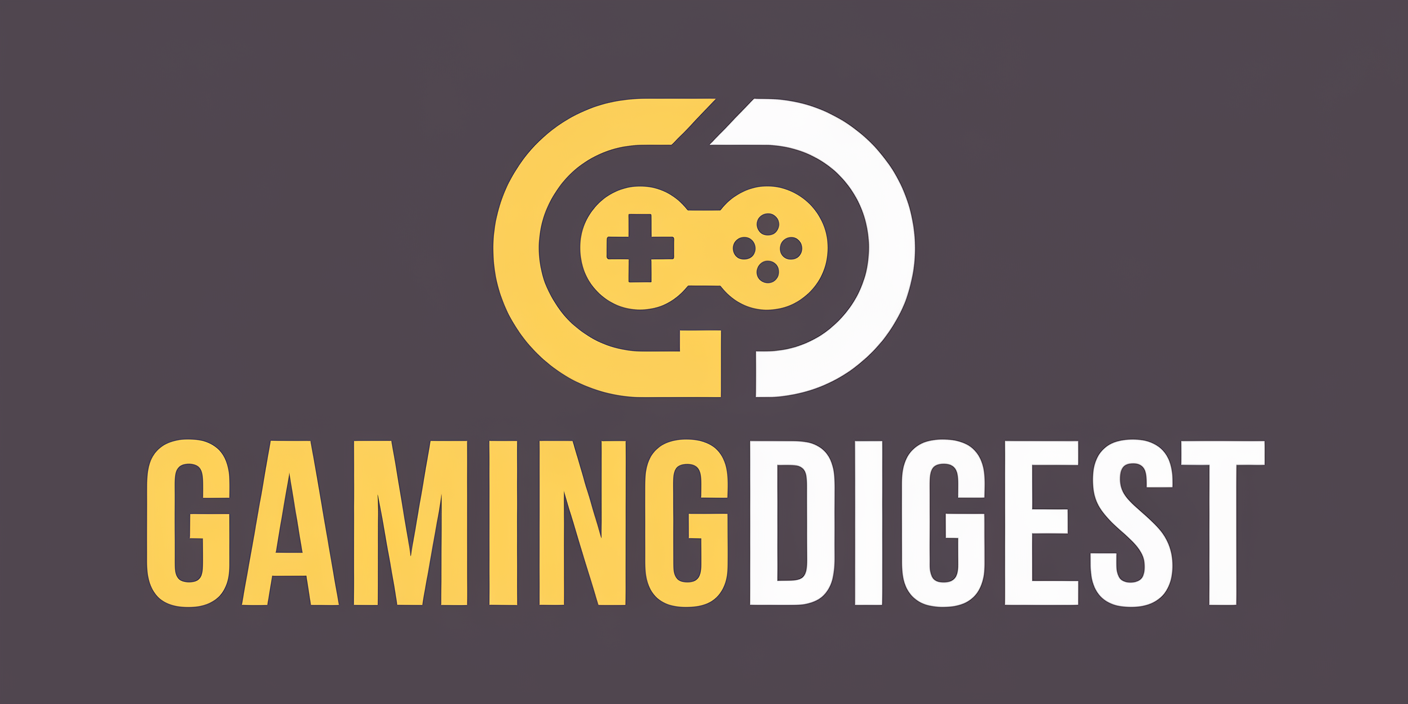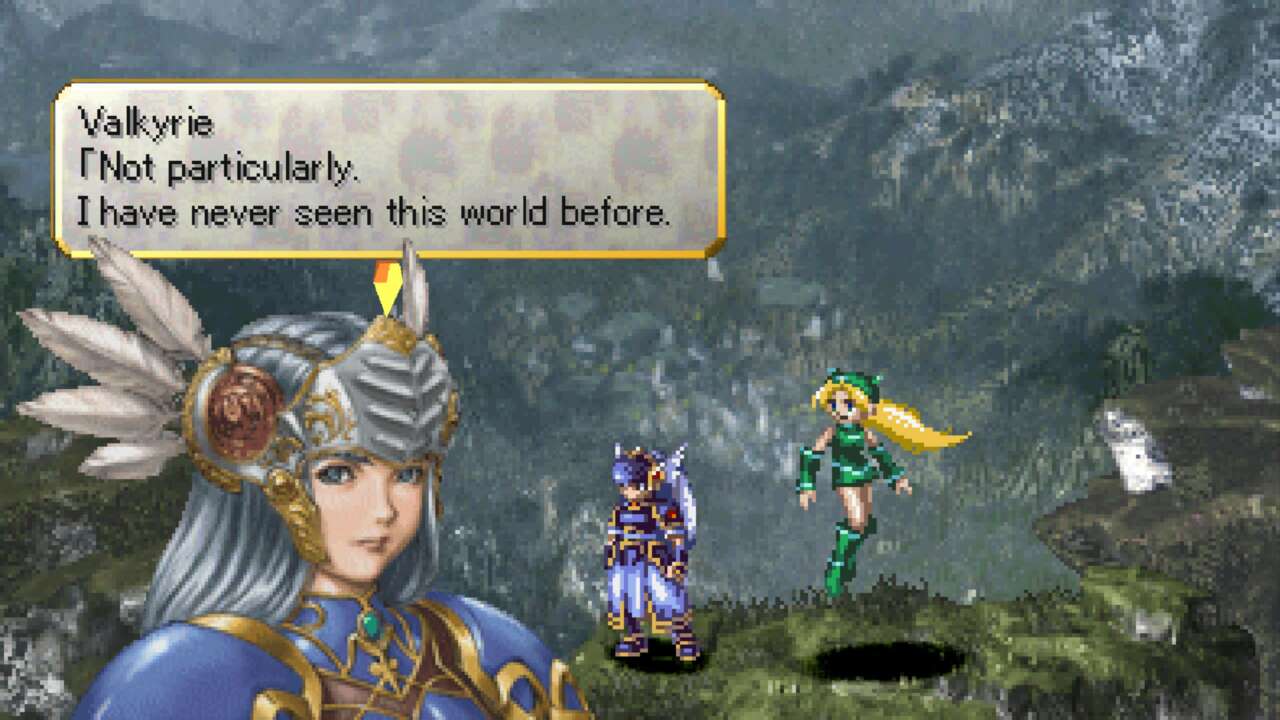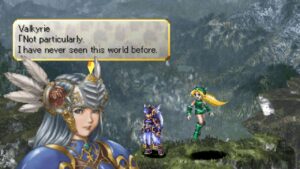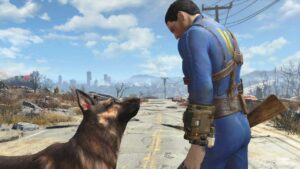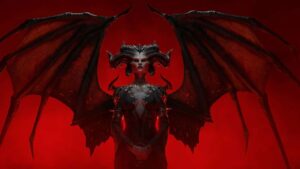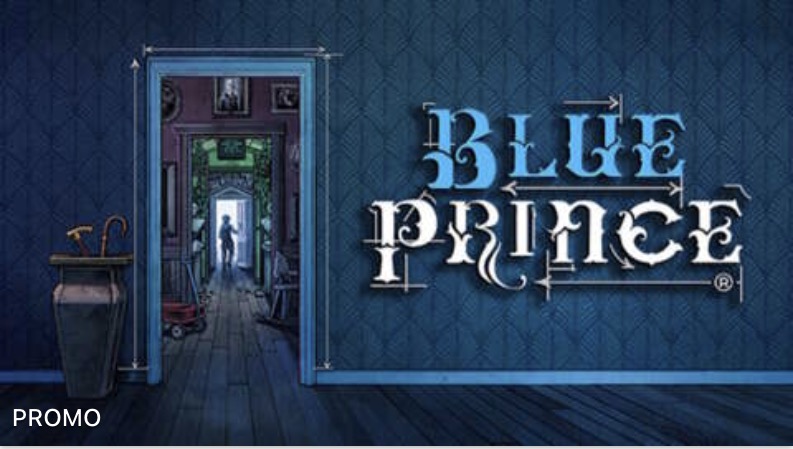Valkyrie Profile is celebrating its 25-year anniversary today, August 29, 2025. Below, we look back at why the RPG went overlooked at the time, and what makes it still stand out as special today.
It’s not hard to see why Valkyrie Profile wound up overlooked in its initial North American release. Japanese publisher Enix had only recently revived its US branch, likely due to both the surge of popularity of JRPGs in the post-Final Fantasy 7 era and the success Sony had licensing and releasing Star Ocean: The Second Story globally. But it was going to be an uphill struggle to get a new PS1 RPG any traction, even one made by Star Ocean 2 developer Tri-Ace. The Dreamcast was already out, the US launch of the PS2 was less than two months away, and Squaresoft had dropped Chrono Cross, a follow-up to the beloved Chrono Trigger, a couple of weeks earlier.
It was my freshman year of college, the weekend just before my birthday, and I wanted a new RPG to keep me occupied between classes. I had two choices: Valkyrie Profile or Chrono Cross. After having a delightful experience with Star Ocean 2 the summer before, my gut was telling me that Valkyrie Profile was the one I should pick.
I have never once regretted my purchase. Valkyrie Profile was–and still is–one of the greatest RPGs of its era, a game that–despite universal acclaim from its many devoted fans–remains criminally underplayed. It’s been 25 years, and there’s still nothing else that captures the same magic.
As you might surmise from the title, Valkyrie Profile’s setting is built around concepts inspired by Norse mythology–with a good deal of creative wiggle room, of course. Lenneth, the titular Valkyrie, has been summoned to the service of the great god Odin, ruler of the heavenly realm of Asgard. He has learned that the mythical Ragnarok is nigh, and between that and the Aesir gods’ struggle with the Vanir heating up, they need manpower in the form of worthy human souls: einherjar. Lenneth must find the worthy souls of the recently departed on the lower plane of Midgard to train and transfer to Asgard before the gods’ final confrontation. There are also plenty of messes on Midgard to clean up, however–the undead seeping in from Niflheim, a rebellious former einherjar, and humans overstepping their boundaries.
It’s clear from the outset that, in contrast to the gilded realm of the gods, Midgard is a den of abject misery. Villages exist on the brink of catastrophic collapse. Desperation has led to many partaking in dangerous activities to make a living. Illicit trades like smuggling, thievery, and even human trafficking thrive in this harsh, bleak realm, and many seem to live day to day with one foot already in the grave. You can’t help but wonder if the cataclysm of Ragnarok might be a small mercy to end all the suffering that’s seen.
Lenneth, with the gift of spiritual concentration, can sense the struggles and anguish of the departed. When she comes to take their soul under her wing, she sees what their final days of existence were like, their tragic fates laid bare. Her first recruits involve a haughty princess and a gruff mercenary who find themselves caught up in a convoluted plot by a traitorous noble–one that dooms them both. More tragedies follow. A warrior strikes a faustian bargain to cure his sister’s blindness, only to perish at the hands of his inner demons. A headmistress at a magic academy finds herself slaughtered by her own husband, transformed into a monster by a vengeful student. Those are just a handful. Not every death feels undeserved, as not everyone who Lenneth recruits is a particularly good person. It’s their usefulness to Odin that matters–and Lenneth can help shape them into the perfect fighters.
Knowledge of Midgard’s geopolitical environment can be gleaned from the interwoven sagas of the departed, and while the gods generally care little about most human affairs, Lenneth encounters numerous personalities that shake up her ongoing mission. There’s an einherjar who seems oddly familiar with Lenneth. Then there’s Brahms, the lord of the undead, who appears to hold someone important to Lenneth and the gods hostage to prevent them from destroying him. And, of course, sorcerer wunderkind Lezard Valeth: The only thing worse than his creepy obsession with making the Valkyrie “his” are the immoral means he’ll stoop to to make that happen.
The ever-present tragedy of Valkyrie Profile helps set it apart from most other RPGs of the era, but a lot of what makes it feel special to this day are its unique interlocking gameplay mechanics. One of these is the game’s distinct structure. Exploration is largely freeform, allowing you to visit areas, recruit einherjar, and delve into dungeons when you see fit. Progression is instead dictated by a timer system: The game’s chapters are divided into a set number of “periods,” and actions–recruitment, exploration, resting–all have a set time cost. When you reach the end of that chapter’s periods, Lenneth receives an evaluation from Asgard. Actions performed during the chapter, such as sending suitable einherjar and lost artifacts to Asgard, count towards your evaluation. Perform well, and you get rewarded. Then you move on to the next chapter. While some characters and areas only become available in certain chapters, you’re usually not obligated to complete anything as soon as it appears, giving you a lot of freedom.
Another defining gameplay characteristic are the dungeons. These are presented as 2D, sidescrolling platformer-style affairs, laden with traps, enemies, jumps, and gimmicks. They often feature bespoke obstacles and tricks that Lenneth will need to overcome, adding an element of puzzle-solving to the platforming action. Fortunately, Lenneth has a handy little tool to help: a crystal projectile. This offers a wide variety of uses: temporarily freezing enemies, creating barriers and platforms, even refracting light or manipulating objects from afar. She can also perform advanced movement techniques by building and shattering crystals in various ways, propelling her into hidden enclaves (and allowing for some fun speed tech).
But Valkyrie Profile’s most memorably distinctive element is its combat. Tri-Ace’s previous Star Ocean games added an element of action gameplay to the usual RPG proceedings, and Valkyrie Profile does something similar in concept, yet entirely different in execution. Each turn of combat sees you controlling four characters, one assigned to each face button. Depending on the weapons you’ve equipped, each character will have access to certain set attacks, which they will execute when you press a button. Some attacks have special properties, such as breaking an enemy’s guard or launching them airborne for juggles. Land enough hits in a turn and you’ll fill a gauge, allowing you to unleash one of your party member’s ultimate attacks. With some strategy and practice, you can learn to chain combos and supers similarly to the way you would in a fighting game.
However, the enemies won’t always make it easy–they’ll guard, parry, and sidestep when they can, upsetting your combat flow and making them much more challenging to slay. Observing and figuring out the properties of your attacks–how they hit, how many hits they have, if they can juggle or damage enemies on the ground–is crucial to both defeat strong enemies and earn lots of post-combat rewards. Learning how the enemies react to your attacks and conduct offense on their turn is important, as well, since you can also dodge, counter, and guard, provided you’ve got the appropriate skills. As cool as this might sound, I’m actually oversimplifying the combat: There’s a tremendous amount of skill and nuance here that will challenge RPG vets and seasoned action-game players alike.
An in-depth skill system bolsters Valkyrie Profile’s gameplay depth. Not only does learning skills help characters in combat, but they also raise characters’ Hero Value and give them positive traits, making them more suitable for service in Valhalla. Passive character skills grant stat boosts, remove negative character traits, and tend to come as specific requests from the gods. Combat skills include auto-heals and low-HP survival techniques, counterattacks, added effects to normal strikes (like splash damage and extra hits), and powerful techniques to catch enemies unaware.

WARNING: Spoilers for Valkyrie Profile’s ending, including its true ending, follow.
Everything culminates in the game’s final chapter, where Lenneth leads the einherjar in an assault on the Vanir stronghold. When she emerges triumphant, you might expect a glorious celebration in Valhalla. But that’s not what you get. The ending you receive for this stellar performance is… bland. And short. Eerily so, as if there’s something being hidden from you. And there is! Valkyrie Profile is a multi-ending game, and part of why it remains so strongly in the memory of players is the trick it pulls on them.
The key to obtaining the true, best ending in the game is a radical departure from what players are often led to expect. It’s easy to assume that performing the tasks the game sets out for you exceptionally well would yield greater rewards, and thus, a better ending. But that’s not what Valkyrie Profile does. Instead, Valkyrie Profile wants you to question and doubt your assigned task.
There are hints throughout that Odin and the gods are not entirely noble, seeing humanity as merely useful tools for their battle and service. By strictly following the orders that Odin has given her, Lenneth plays right into his hands, acting as his obedient pawn. But what if Lenneth disobeyed? Obviously, outright rebellion under the watchful eye of a powerful god would put her directly in his crosshairs for elimination.
What the player must do to free Lenneth from Odin’s control is stage small acts of rebellion over time: sending up only the required number of einherjar, deciding to keep some of the gods’ sacred treasures found in dungeons, visiting places tied to a forgotten past. Even the simple act of removing the ring Odin bestowed upon Lenneth when consulting with Asgard between chapters will help break his sway over her. Lower the Seal Value enough, and when you enter a certain area in Chapter 7, a series of dramatic events will occur, ushering in a moment of reckoning for Lenneth with the fate of all the realms hanging in the balance.
The unique requirements to access this ending was quite a shock to players when the game first released, and even now, it stands out. We’re conditioned to do what we’re told will get us praise and rewards in games, rarely stopping to question why we’re doing it. Valkyrie Profile, in contrast, only reveals the full truth about its world to those who deliberately and defiantly play around its core systems.
Valkyrie Profile has had sequels, spin-offs, and spiritual successors, as well as giving inspiration to many games that followed. Some of these games have been excellent in their own right, others not so much. But all of the games that have come since have deviated in some way from the original gameplay elements that helped make Valkyrie Profile the fantastic experience that it is. Perhaps it’s just a case of lighting in a bottle–the world of games and game development have changed so much since its original release that you can’t recapture the same magic. That’s why its lack of availability on modern platforms is so tragic: only a compromised mobile port and a PS4/5 re-release of the PSP version exist. I can only hope that changes eventually, because there’s nothing else like Valkyrie Profile, and there probably never will be. When I first played it all those years ago on PS1, I was entranced. A quarter of a century later, I still am.
